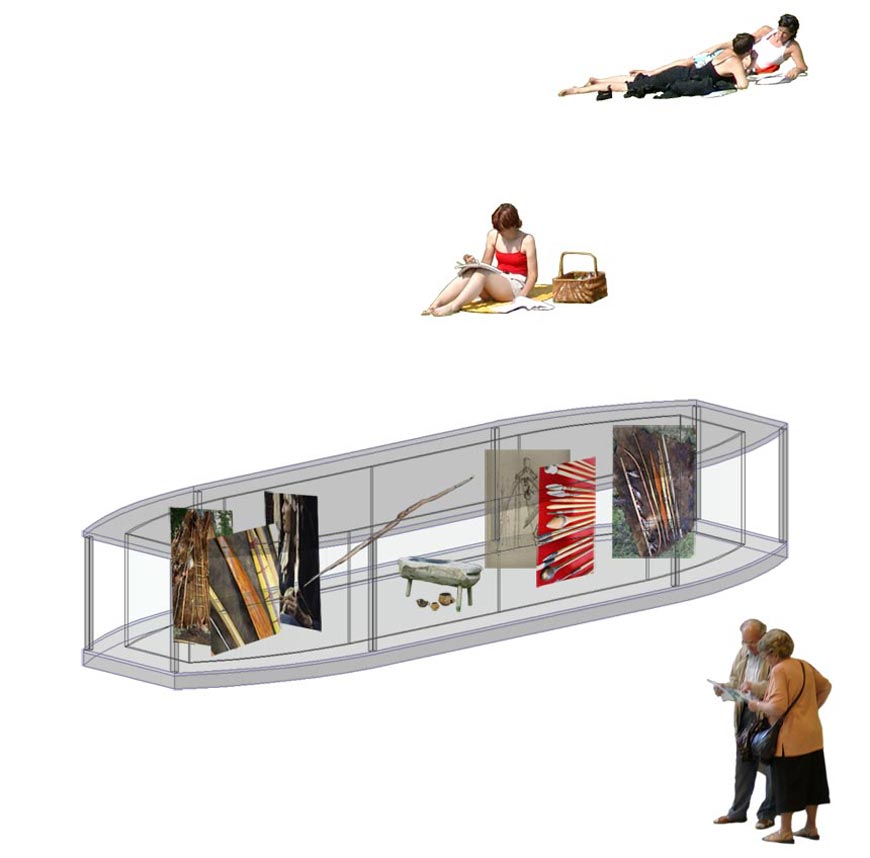Revier Riviera - 2005
Invited competition, Schöningen Landscape Art Prize
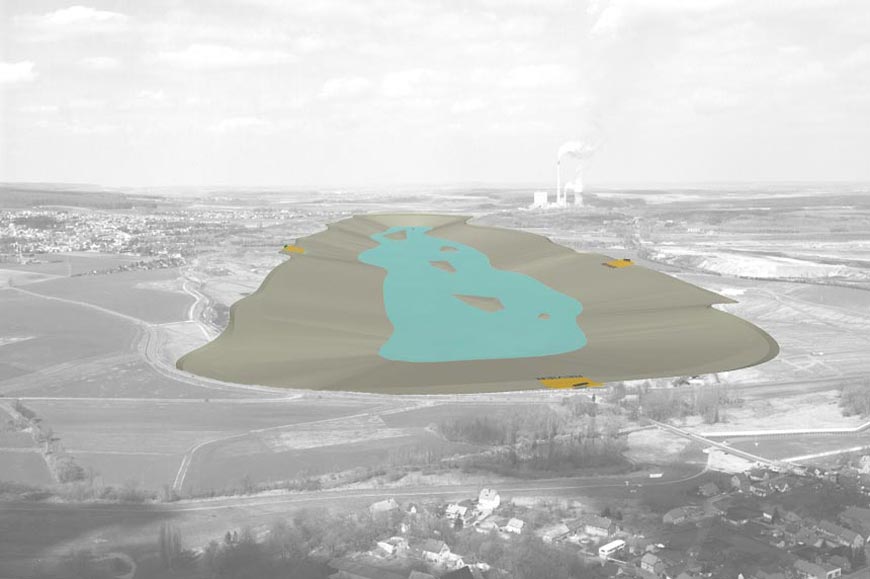
As a location, Schöningen has three qualities with very different time levels and layers of meaning which, in combination, make it unique:
- important archaeological site, where the famous Schöningen Spears were found
- mining (opencast and underground) and processing coal as basis of local economy
- close to former border between East and West Germany, with best preserved monument to this section of the Iron Curtain
Taken together, in their unusual combination, they make the location powerful. Looking for a concept or metaphor capable of encompassing these three features of Schöningen, we chose REVIER (multiple meanings in German, including coalfield, an animal’s territory, province/district, hunting ground) with three different human hunting grounds:
The Schöningen Spears were used by early humans to hunt animals; as the oldest known wooden hunting tools, they have been used to help establish dates for human history. A further visible hunt by humans for raw materials is the opencast lignite mining that has changed the face of the landscape. Finally, the willingness of humans to hunt down other human beings is embodied by the section of East German border in Hötensleben.
The term REVIER links the three main characteristics of Schöningen, as well as leaving room for individual associations. The original meaning of the word REVIER points toward the site’s projected future use:
Derived from Latin via old French and old Dutch, REVIER originally meant an “area along the banks of a body of water,” making it directly related to the word RIVIERA. We took this etymological play on words as our program.
REVIER_RIVIERA consists of a three-level concept which focuses on various stages in the development of the landscape:
- Following and discussing the process of lake creation
- Using the lake as it fills and once it is full
- Integration of related activities, projects and sites into an overall museum concept
The individual projects can be realized independently of one another or as complementary elements. They are a set of immediate and longer-term visions for the Schöningen area.
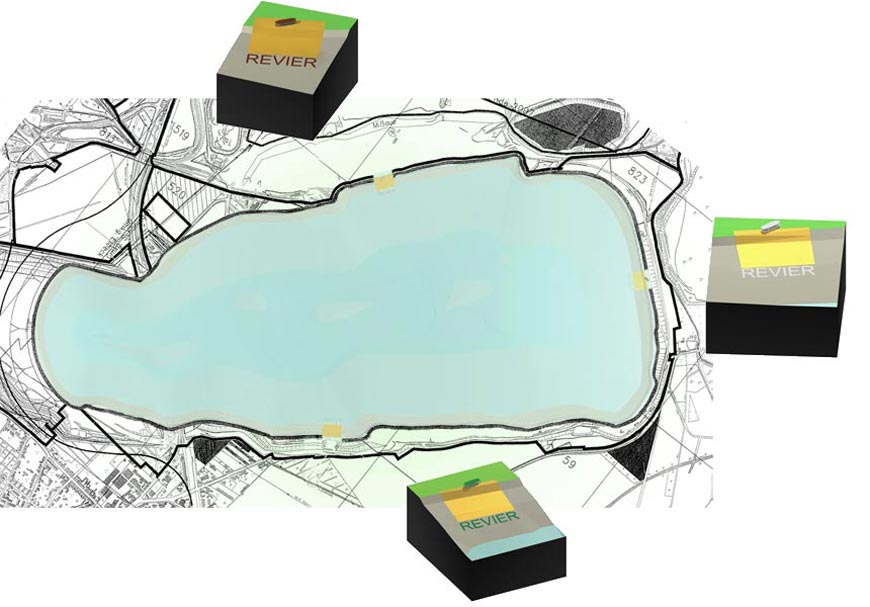
THREE TIMES ‘REVIER’
Writing:
the word REVIER is written in three different locations – each on the bank of the former opencast mine in Südfeld. The three locations inscribe the threefold meaning of the word in the Schöningen area:
Hunting ground (location: site where Schöningen Spears were found)
Coalfield (location: in front of the disused power station in Offleben)
Border zone (location: in front of the border memorial in Hötensleben)
The size of the lettering is chosen to be easily legible from the other bank. In this way, the texts become a kind of signage, awakening visitors’ desire to discover the places in question.
The word is made in different colours loosely associated with the theme in each case. The lettering is flush with the ground, outlined by strips of metal, wood or stone.




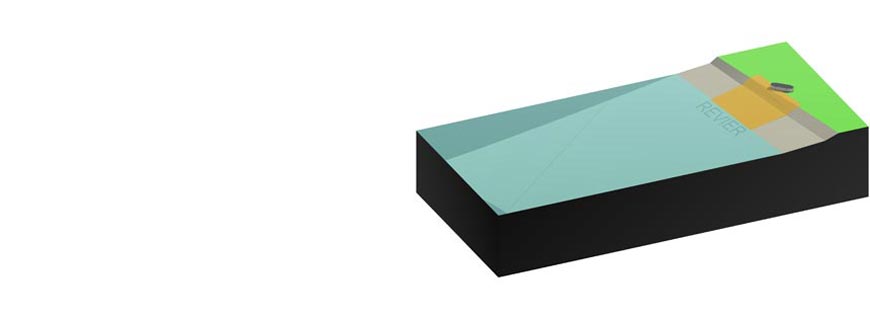
The water in the lake rises, the words slowly disappear, the beach is at the water’s edge: the ‘Revier’ has become a ‘Riviera’. As the lake fills, the three words slowly disappear. But they are positioned high enough that they lie just beneath the final water level, thus remaining visible almost until the end of the filling process.
Beach:
Immediately above each of the words is a sandy beach reaching from the future water’s edge to beyond the rim of the pit. These three beaches are already accessible while the lake is forming. They offer an attractive place from which to observe the changing landscape. Once the lake is full, they become beaches for bathing.
The process of the words being washed away by the water symbolizes the region’s changing identity: a new usage is superimposed over the former coalfields, while exhibitions in the pavilions and the names of the beaches refer to these roots. The ‘Reviere’ become a Riviera.
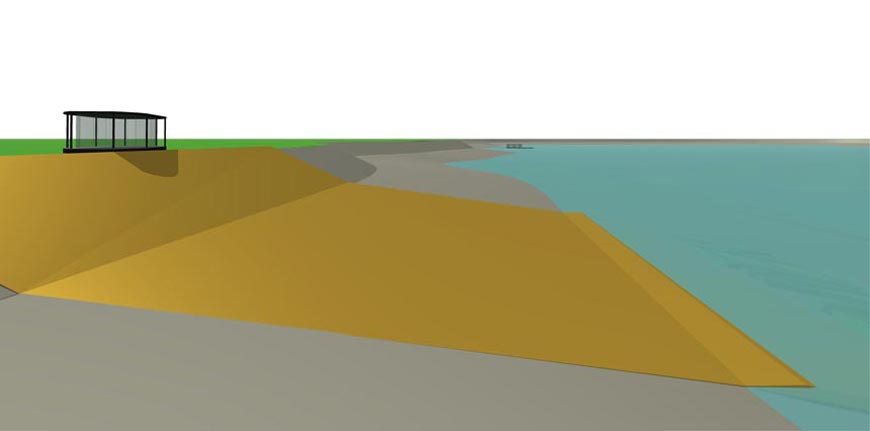
Pavillon:
At the top end of each beach stands a pavilion. Each of these three pavilions functions as a large vitrine, hosting permanent or temporary exhibitions on the various contents of the word ‘Revier’: at Hunting Ground Beach, documentation of the archaeological finds of the Schöningen Spears; at Coalfield Beach, documentation on the history of lignite mining in the region; and at Border Zone Beach, documentation on the border between East and West Germany – in each case taking into account the impact of these factors on the region. The colour of the pavilions matches the colour of the lettering in each case.
